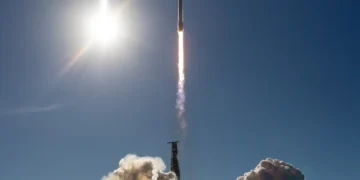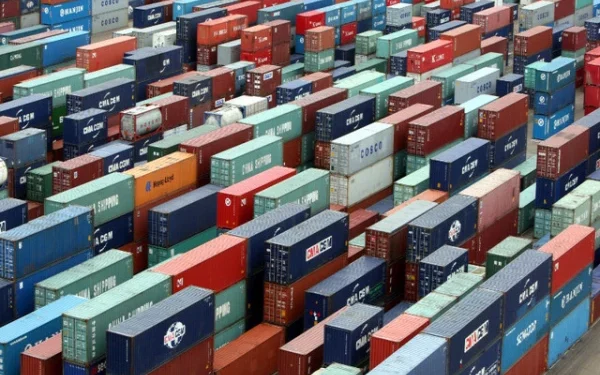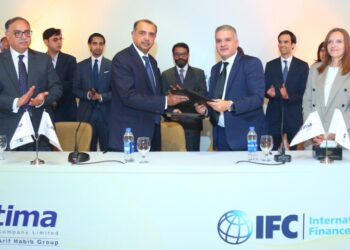Overview
Islamabad — Federal Minister for Planning, Development and Special Initiatives Ahsan Iqbal has reassured the nation that the recent 44% increase in Pakistan’s trade deficit for July 2025 is only a temporary setback. Speaking at the launch of the government’s first monthly development report for the fiscal year 2025–26, Iqbal emphasized that this spike will be offset by a rise in exports in the coming months as planned economic measures take effect.
The Numbers Behind the Concern
According to official trade data:
- Trade Deficit (July 2025): $2.7 billion
- Year-on-Year Increase: 44% compared to July 2024
- Reason for Concern: A larger trade deficit means more foreign exchange leaving the country than coming in, which can pressure currency reserves, exchange rates, and overall economic stability.
For perspective, a trade deficit is calculated by subtracting the value of a country’s exports from its imports. When imports outweigh exports — as in Pakistan’s case — the gap can strain the economy, especially if not counterbalanced by foreign investment or remittances.
Ahsan Iqbal’s Assurance
Addressing the launch ceremony in Islamabad, Ahsan Iqbal told journalists and stakeholders that the increase is not a sign of economic decline. Instead, he linked the jump to temporary factors that are already being addressed.
“This increase in the trade deficit is a temporary phenomenon,” Iqbal said. “We have reduced duties only on those items that will directly boost Pakistan’s exports, which means our export performance will improve in the coming months.”
He further explained that part of the July increase could be due to importers delaying shipments until after the government reduced certain tariffs. This suggests that the spike in imports may normalize in the near term.
Government’s Policy Moves
The government’s recent duty reduction policy targets specific categories of imports — particularly those used in manufacturing and export-oriented industries. By reducing the cost of importing raw materials, intermediate goods, and production machinery, policymakers hope to:
- Lower production costs for local manufacturers
- Improve competitiveness of Pakistani products in global markets
- Boost export volumes in textiles, pharmaceuticals, engineering goods, and IT-enabled services
According to Iqbal, the duty cuts were carefully applied only to those products that contribute to value-added production, not to luxury goods that drain foreign reserves.
Why the Trade Deficit Matters
A sustained rise in the trade deficit can:
- Put downward pressure on the Pakistani Rupee
- Increase reliance on foreign borrowing
- Lead to inflationary pressures if imports become more expensive
However, temporary deficits — especially those linked to investments in industrial inputs — can be considered part of economic restructuring. Economists often point out that in early phases of industrial expansion, imports of machinery and raw materials may rise before exports catch up, leading to short-term imbalances.
Importers’ Anticipatory Behavior
Iqbal highlighted another factor contributing to the July numbers:
Importers, aware that tariff reductions were coming, postponed shipments in June to take advantage of lower duties in July. As a result, import volumes spiked in that single month, temporarily widening the deficit.
Such front-loading of imports is a common occurrence in economies undergoing tariff changes. Once the initial surge passes, trade patterns usually normalize.
Monthly Development Report: A New Transparency Tool
The event where Ahsan Iqbal made these comments was the unveiling of the first monthly development report for FY 2025–26. This new government initiative aims to:
- Provide timely, transparent updates on economic performance
- Track progress on public sector development projects
- Monitor key economic indicators such as exports, imports, inflation, and industrial output
Iqbal stressed that data-driven governance is essential for correcting policy mistakes quickly and for building investor confidence.
Global Economic Context
Pakistan’s trade dynamics cannot be viewed in isolation. In 2025, the global economy has been experiencing:
- Fluctuations in commodity prices, particularly oil and gas
- Disruptions in global shipping due to geopolitical tensions
- Changes in demand patterns in major export markets such as China, the EU, and the Middle East
Pakistan’s reliance on imported energy and intermediate goods means that global price volatility directly affects its trade balance.
Potential Export Growth Drivers
The government’s optimism about upcoming export growth is rooted in several trends:
- Textile Sector Recovery – Following a slowdown in 2024 due to energy shortages, textile mills have resumed higher production after the government prioritized energy supply to export-oriented units.
- Agricultural Exports – Better crop yields and improved logistics are expected to boost exports of rice, fruits, and vegetables.
- IT and Digital Services – Pakistan’s IT sector has seen steady growth, with software exports expanding into new markets in the Middle East and Africa.
- Engineering and Pharmaceuticals – Increased investment in manufacturing has positioned these sectors for stronger international sales.
Balancing Imports and Exports
While increasing exports is the preferred way to narrow the trade deficit, managing imports remains equally important. Pakistan has historically imported:
- Petroleum and petroleum products
- Machinery and equipment
- Edible oil and food products
The government’s strategy is to reduce non-essential imports while encouraging imports that support industrial production and export growth.
Economic Confidence vs. Market Caution
Financial markets have responded cautiously to the trade deficit figures. Currency traders expressed concerns about pressure on the rupee, but analysts noted that if export earnings rise as projected, the currency impact could be short-lived.
Investors are watching closely for:
- Signs of export growth in August and September
- Stability in global oil prices
- The effectiveness of government policies in diversifying export markets
Challenges to the Optimistic Outlook
Despite the minister’s confidence, there are real challenges:
- Energy Prices – Rising global oil prices could inflate Pakistan’s import bill.
- Global Demand Slowdown – Economic sluggishness in Europe and China could limit export growth.
- Domestic Industrial Costs – If inflation and interest rates remain high, local producers may struggle to compete internationally.
Long-Term Structural Reforms Needed
Economists argue that while monthly trade deficit fluctuations can be temporary, sustainable improvement requires:
- Expanding the industrial base
- Investing in technology and innovation
- Improving trade logistics through ports, roads, and rail upgrades
- Negotiating favorable trade agreements with major economies
Without these reforms, any gains in exports could be short-lived.
Conclusion
Federal Minister Ahsan Iqbal’s message is clear: don’t panic over July’s trade deficit spike. The government believes that targeted duty reductions, improved energy supply to industries, and export promotion measures will soon reverse the trend.
While the numbers — $2.7 billion in July and a 44% year-on-year increase — may appear alarming, the underlying factors suggest a temporary imbalance driven by import timing and strategic industrial inputs. The coming months will reveal whether the government’s confidence in an export-led recovery is justified, or whether structural challenges will require a more aggressive policy response.

























